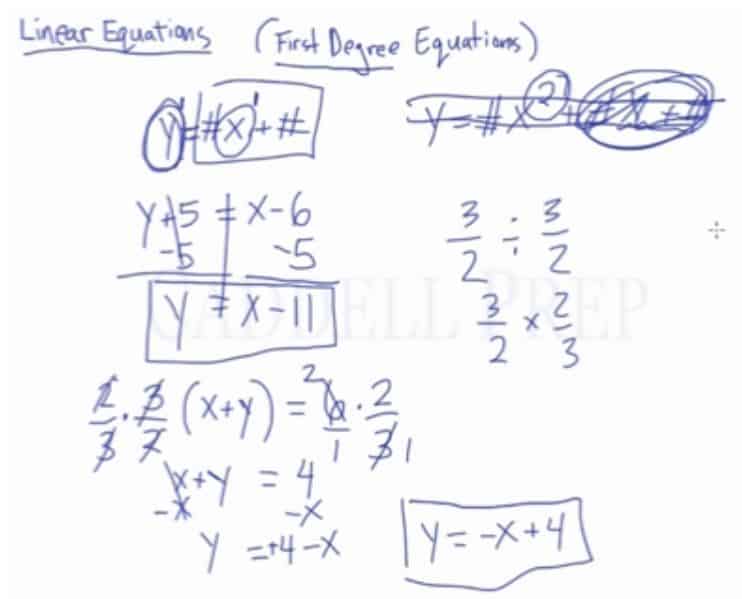In this video, we will be learning how to solve for one variable in terms of another in linear equations, such as solving for y in terms of x. After you finish this lesson, view all of our Algebra 1 lessons and practice problems.
Example of Solving a Linear Equation
Multiply both sides by
to isolate x and y
Subtract x from both sides to isolate y
Write in
form
Example 1
First, we must get rid of . So, we multiply it by its reciprocal.
Let’s add to both sides to keep the format
Therefore,
Example 2
First, distribute to each of the terms inside the parenthesis
Then, subtract to both sides
We have to get rid of in
to keep the format
So, we multiply it by its reciprocal
Therefore,
Video-Lesson Transcript
In this lesson, we’ll go over linear equations also known as first degree equations.
The basic format of a linear equation is
, where
and
are numbers.
The first thing is that we have two variables and
.
A very important reminder about linear equation is why it’s called first-degree equation.
It’s because the exponent for the variables – and
– is
.
So if we have this equation:
The end of the equation doesn’t matter at this point.
As soon as you see an exponent that isn’t 1 it’s not a linear equation.
The exponent has to be one.
So, what we really want to do in a linear equation is to solve for one of the variables.
So what we want is some variable such as equals everything else. Whatever that everything else is.
For example:
What you need to do is to isolate by itself.
So, we have to do inverse operations or reverse PEMDAS to get by itself.
Don’t worry about the fact that there’s here. It’s just a number minus another number. This doesn’t matter.
The only thing that we want to focus on is .
So let’s isolate by subtracting
from both sides of the equation.
Our final answer is
Let’s try another one.
What we’re going to do here is to get rid of .
To do this, we just have to multiply it by it’s reciprocal. It cancels out perfectly.
A side note:
The reason why we multiplied it by its reciprocal is because we want to divide the fraction to cancel it out.
What is ?
We have to do keep-change-flip. So we have
So by multiplying by reciprocal, I actually am dividing.
Let’s move on solving
Maybe you want to put a denominator to , so we can cross cancel.
So now we have
This is okay but we want to write -term first.
So our final answer is



